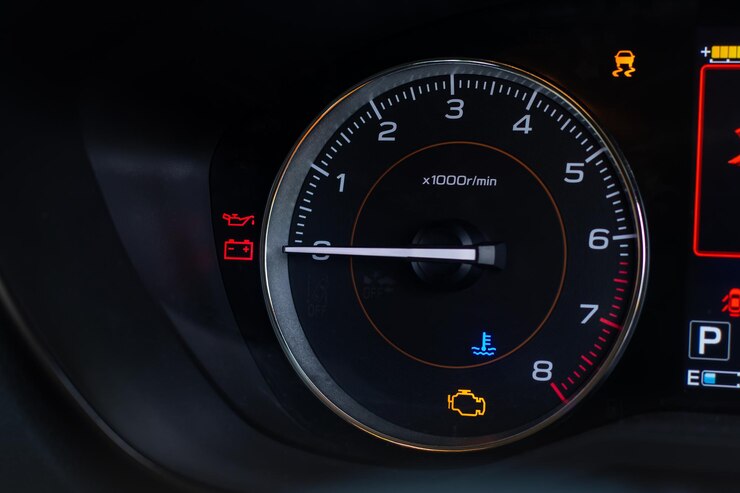The cooling system in a vehicle is responsible for maintaining the optimal operating temperature of the engine. It consists of various components, including the radiator, coolant, water pump, and cooling fan. The cooling fan plays a crucial role in dissipating heat from the radiator and preventing the engine from overheating. Modern vehicles are equipped with onboard diagnostic systems that can detect cooling fan malfunctions and illuminate the cooling fan malfunction warning light on the dashboard. In this article, we will discuss the causes of cooling fan malfunctions, the importance of the warning light, and potential fixes for the issue.
Causes of Cooling Fan Malfunctions:
- Faulty Fan Motor: The cooling fan motor can fail due to electrical issues, a burned-out motor, or a faulty fan relay. When the fan motor fails, it can no longer effectively circulate air through the radiator, resulting in poor cooling system performance.
- Defective Temperature Sensor: The cooling fan is controlled by a temperature sensor that detects the engine’s temperature and signals the fan to turn on when needed. A malfunctioning temperature sensor may not accurately measure the engine’s temperature, causing the fan to operate improperly or not at all.
- Wiring Issues: Problems with the wiring harness that connects the cooling fan to the vehicle’s electrical system can cause fan malfunctions. Loose connections, damaged wires, or corrosion can disrupt the flow of electricity and prevent the fan from functioning correctly.
- Blown Fuse: The cooling fan circuit is protected by a fuse. If the fuse blows, it can interrupt the power supply to the fan motor, rendering it inoperable.
Importance of the Cooling Fan Malfunction Warning Light:
The cooling fan malfunction warning light serves as an early warning system, alerting drivers to potential cooling system issues. It is important for several reasons:
- Engine Protection: The cooling fan plays a crucial role in preventing the engine from overheating. If the cooling fan malfunctions, the engine may overheat, leading to potential engine damage or even a breakdown. The warning light helps drivers identify cooling system issues promptly and take necessary action to prevent engine damage.
- Driver Safety: An overheating engine can lead to unsafe driving conditions, as it may cause a loss of power, engine stalling, or other performance issues. The warning light alerts drivers to cooling fan malfunctions, allowing them to address the issue before it poses a safety risk on the road.
Fixes for Cooling Fan Malfunctions:
- Professional Diagnosis: If the cooling fan malfunction warning light illuminates, it is advisable to have the vehicle inspected by a qualified technician. They will use diagnostic tools to identify the exact cause of the fan malfunction and recommend the appropriate repairs.
- Fan Motor Replacement: If the cooling fan motor is determined to be faulty, it will need to be replaced. A qualified technician can perform the necessary steps to replace the motor and ensure proper fan operation.
- Temperature Sensor Replacement: If the temperature sensor is found to be defective, it should be replaced. This will restore accurate temperature readings and enable the fan to operate as intended.
- Wiring Repair: In cases where wiring issues are causing the fan malfunction, the technician will inspect the wiring harness, repair any damaged wires, and ensure proper connections are made.
- Fuse Replacement: If the cooling fan fuse is blown, it should be replaced with a new fuse of the appropriate rating. This will restore power to the fan motor and allow it to function properly.
Regular Maintenance and Preventive Measures:
To reduce the risk of cooling fan malfunctions, it is important to follow regular maintenance practices:
- Coolant System Flush: Regularly flush and replace the coolant as per the manufacturer’s recommendations. This helps prevent coolant contamination and ensures proper cooling system operation.
- Belt and Hose Inspection: Periodically inspect the cooling system belts and hoses for signs of wear or damage. Replace any worn-out components to maintain proper fan operation.
- Keep the Radiator Clean: Clean the radiator regularly to remove dirt, debris, and bugs that can obstruct airflow. A clogged radiator can impede cooling system performance.
The cooling fan malfunction warning light is an important indicator of potential cooling system issues. Ignoring the warning light can lead to engine overheating and other related problems. By promptly addressing cooling fan malfunctions and following regular maintenance practices, drivers can help ensure the proper functioning of their vehicle’s cooling system and prevent engine damage.











